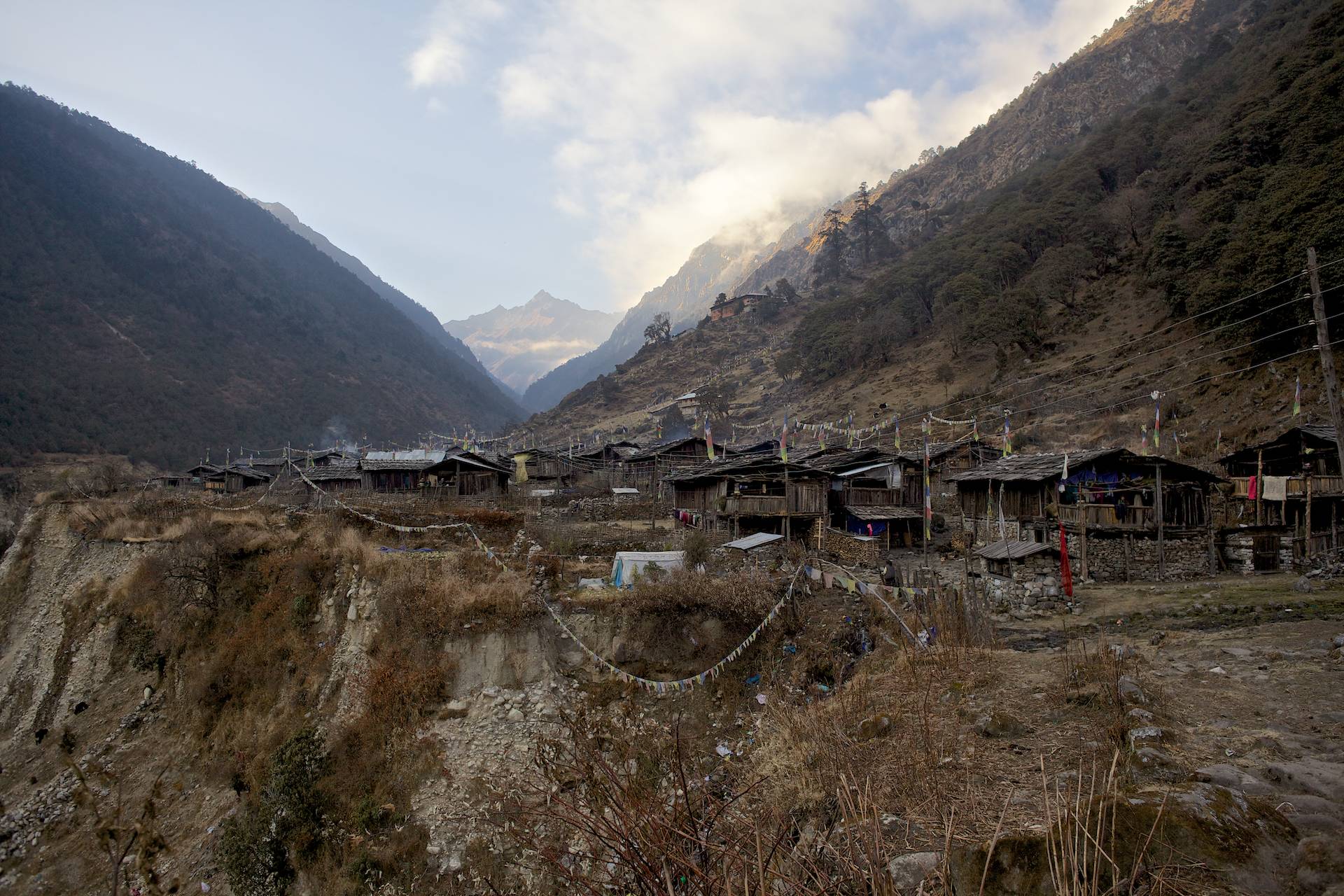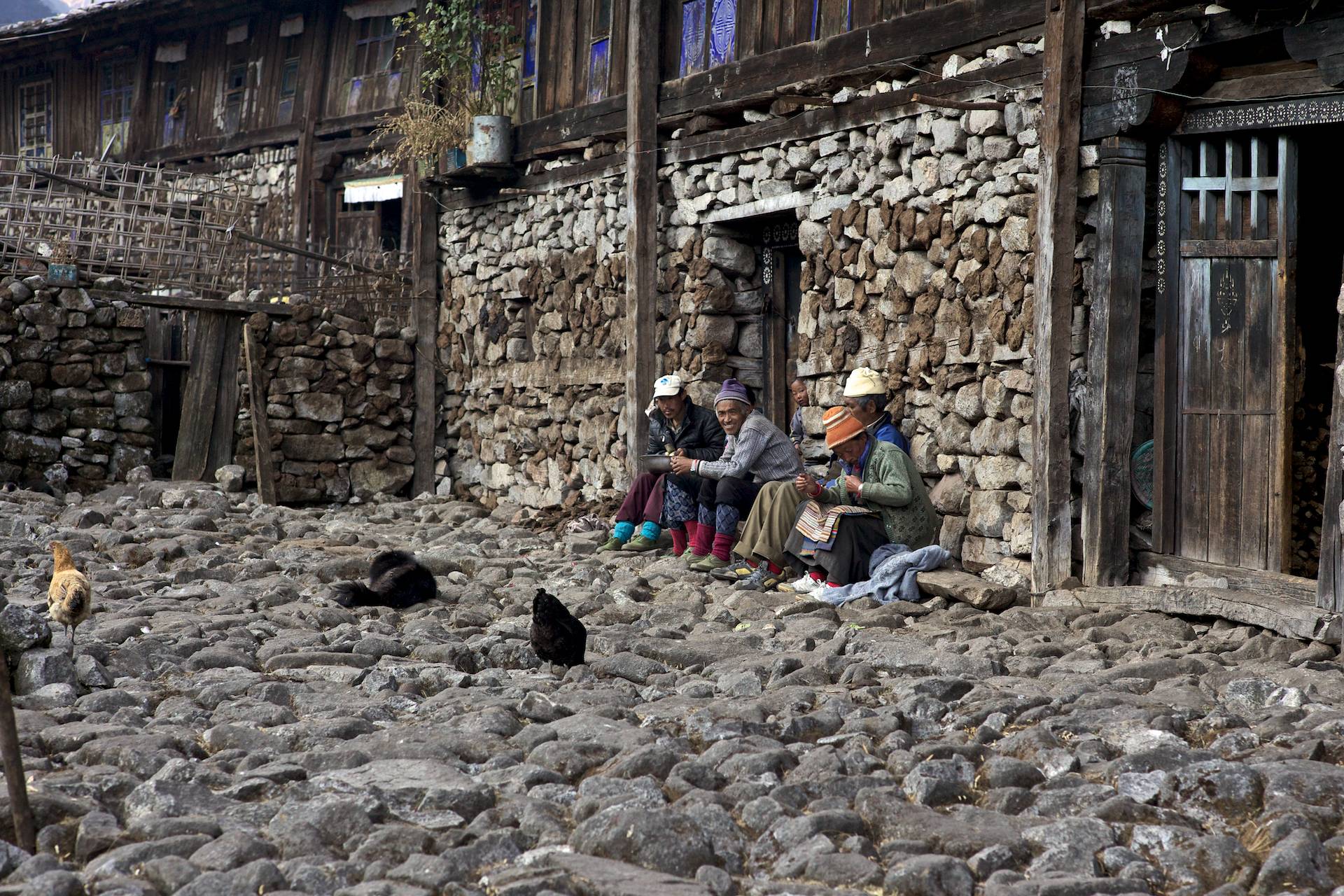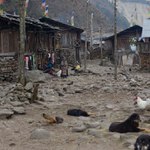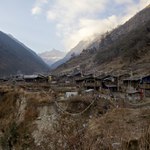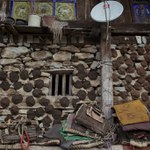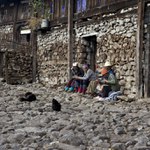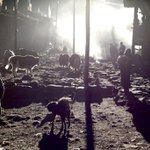In and Out of Walung
This is Walung, a village in the upper Tamor Valley in the Kanchenjunga area of Eastern Nepal. I visited Walung at the end of November for my research on Neighbouring China and the revival of old trade routes across the Himalayas. Walung is situated on the most direct route between Shigatse in Tibet and Kolkata in India, just a day’s walk from the Tibetan border. There are no fields in Walung, yet the village was known as a place of considerable wealth thanks to its strategic location on this lucrative trade route.
When the Tibetan border closed in 1959 after the Lhasa uprising and the ensuing communist reforms in Tibet, most of the wealthier Walung families moved out. They bought land in Kathmandu, built houses, and expanded their mercantile activities to new ventures and markets.
Over the past two years I conducted a series of interviews with descendants of these wealthy families in Kathmandu. I was under the impression that Walung’s golden days were long gone. However, what I found in Walung during my short stay revealed a different picture.
The families that remained in Walung gradually took the place of those who left. They moved into the large mansions of the emigrated elite, and with the gradual opening of the border from the mid 1960s onwards new trading opportunities arose. Poorer families from Tibet and the surrounding villages arrived, and step by step established themselves as well. Firewood collectors became yak herders, yak herders became traders, and traders started sending their children to study in Darjeeling and Kalimpong – to the same renowned Indian boarding schools in which the former elite used to enroll their children. And, just as those who left in the 1960s, they accumulated capital and started moving out themselves – to Kathmandu, to South Korea, and to America.
Walung, this little village in the Himalayas, continues to create wealth. People move in, move up, and finally they move out. The following posts in this series will explore fragments of life in Walung, of arrivals, departures and the traces left behind.
Privacy Policy
Plain and simple: I take the principle of minimal data collection serious and try hard not to collect or process any personal data beyond the basics required to serve and maintain the website.
Specifically,
- We do not use cookies.
- We do not use third party analytics.
- There is no contact form that would allow you to enter personal data.
- We do not use advertising to run this website.
In order to serve this website, your IP address and information about your browser, operating system and screen resolution need to be collected and processed. theotherimage.com is a simple, handcrafted, static website hosted by Netlify. It uses fonts by Adobe Fonts (formerly Typekit). Both Netlify and Adobe automatically collect usage data, either generated by the use of this website or from the service infrastructure itself. This data is used for accounting and analytic purposes as well as for technical maintenance by these two companies. Neither Netlify nor Adobe use cookies to track you. Specifics can be found in their respective privacy policies.
The videos on this website are hosted by Vimeo. Depending on your browser configuration, Vimeo may use cookies and other tracking technologies as stated in their respective privacy policies.
If you have any questions about this privacy policy, please write to: Martin Saxer, LMU Munich, Department of Social and Cultural Anthropology, Oettingenstr. 67, 80538 Munich, Germany.
This privacy policy has been updated on 30 December 2018.
![[ the other image ]](/images/logo/toi-logo_2x.png)

